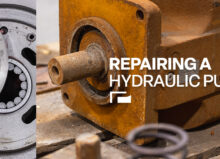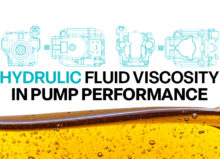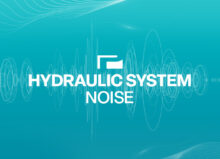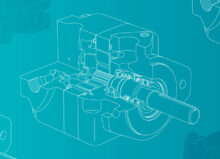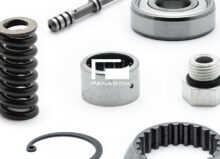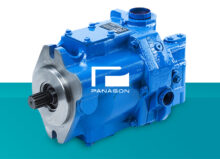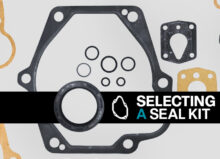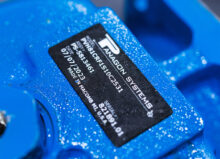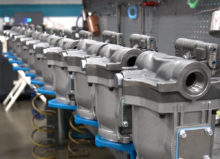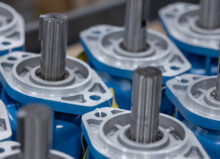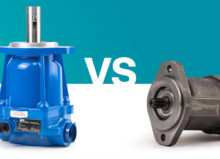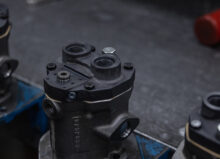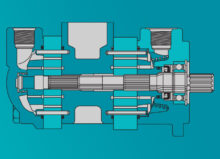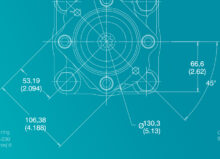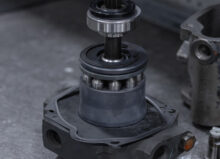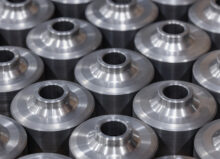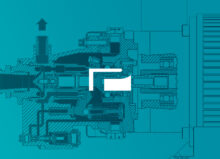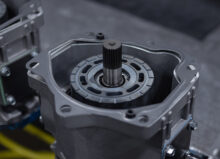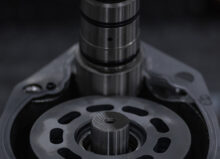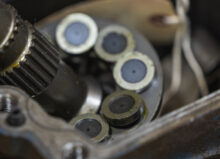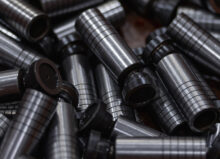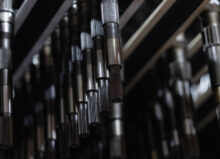How Do Hydraulic Pumps Work?
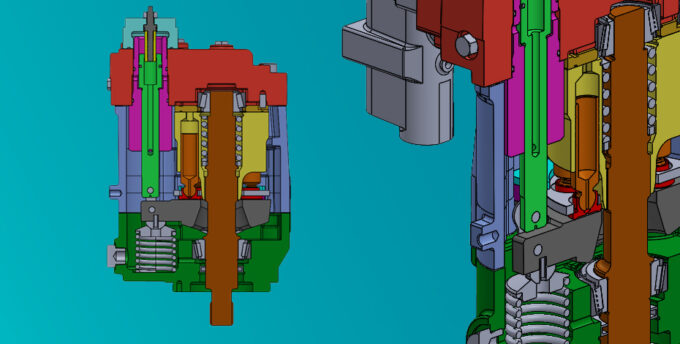
Tractors, assembly lines, and log splitters all use hydraulics to operate. The term hydraulic simply refers to a motion that is generated by liquid. Hydraulics make heavy-duty work possible and are used in a wide variety of industrial applications. The hydraulics process is made possible by a complex internal system, the pump’s heart. Read below for more information on hydraulic pumps, how they function, and how you can use them in your business.
What Are Hydraulic Pumps?
A hydraulic system is powered by a pump that converts mechanical energy into hydraulic energy. Hydraulic energy can be referred to as the pressure needed by actuators to function. Pressure and flow are integral to the hydraulics process, and one cannot work without the other. Without flow, pressure is just trapped fluid. Without pressure, the flow would have no energy to move fluid. When a hydraulic pump functions, a vacuum is created within the pump inlet. This vacuum process forces liquid from the reservoir section of the unit into the inlet line and finally to the pump. Lastly, the fluid is pushed into the hydraulic system.
There are many types of pumps. Hydrostatic pumps are classified as positive displacement units, while hydrodynamic machines are typically fixed. In fixed displacement pumps, the flow through the unit per pump rotation cannot be adjusted. Hydrodynamic pumps are more commonly used in most everyday industrial applications.
Types of Hydraulic Pumps
Hydraulic pumps use fluid to provide power and operate machines, including rams, cylinders, and motors. For example, a car’s power steering pump works using this process. Hydraulic pumps can be manually operated or driven by a motor. Variable displacement pumps are particularly worthwhile as they allow operators to provide adjustments while keeping constant revolutions per minute input.
Other than variable displacement pumps, the most common types of hydraulic pumps used in industrial applications include:
- Axial piston pumps: These pumps are positive displacement pumps that utilize multiple cylinders assembled around a central axis. These cylinders are typically referred to as cylinder blocks. There are pistons in each cylinder, which are attached to a swashplate. Swashplates are also commonly referred to as wobble or cam plates. These swashplates attach to the rotating shaft, which moves the pistons in and out of their cylinders as the swashplate angle changes. Axial piston pumps can also be manufactured as variable displacement piston pumps. Using this design, the cylinders are beneficial to any production process as their speeds can be controlled. The swashplate is utilized to vary the depth at which a piston is driven into the cylinder. This length variation affects discharge volume, allowing operators to have constant discharge rates under varying loads.
- Radial piston pumps: While axial pumps arrange pistons around a central axis, these pumps place their pistons outwardly around a rotor hub. Situated in the pump housing, the rotor makes the pistons move throughout the cylinder as it moves. This movement forces the solution to be pulled into and then expelled from the cavity of the cylinder. Other pump components are located in the valve in a centralized hub. Other radial piston pumps are designed to situate the inlets and outlets on the outside of the housing. These pumps can be designed as either variable or fixed displacement pumps.
- Rotary vane pumps: While radial pumps utilize rotor hubs, rotary vane pumps use rigid vanes situated around an eccentric rotor. While in operation, the rotor moves along the inside wall of the housing to make smaller volumes. This process forces the hydraulic fluid out through the discharge port. In other configurations, the amount of fluid pushed out of the pump each rotation can be adjusted to align with the rotor’s rotational axis.
- External gear pumps: External gear pumps are positive displacement hydraulic systems used to handle all types of fluids in various applications. Distinct from internal gear pumps, these units utilize two gears situated outside individual shaft devices to aid in the movement process. These pumps can move both thin and thick fluids, but movement speeds are slower with materials of higher viscosity levels. External hydraulic pumps are commonly used in fixed-displacement applications as they can operate in high-pressure environments.
- Internal gear pumps: In direct contrast to external pumps, internal gear pumps utilize gears situated on the inside of shafts. They are self-priming and non-pulsing devices. These devices can run without liquid for short periods but can become nonoperational if left dry for too long. Internal gear pumps are bi-rotational, implying that one pump can be utilized to unload and load devices. These pumps are generally considered reliable because they have a simple configuration, containing only two moving parts.
This is not a comprehensive list of all hydraulic pump types. Other types may be used based on the application and the project requirements. Custom pumps can also be manufactured if you have specific tasks that require a different configuration.
How Do Hydraulic Pumps Work?
As previously discussed, a hydraulic pump is a mechanical actuator that changes hydraulic energy into hydraulic power. It generates power by stimulating the flow to overcome pressure brought on by the cylinder’s load. Most hydraulic pumps perform two separate functions when they operate. First, a vacuum at the pump inlet is generated, which is a mechanical action. This action allows natural pressure to expel fluid from the unit’s reservoir and then push it through to the pump’s inlet line. Second, this mechanical action propels the liquid to the outlet and delivers it to the hydraulic unit. The essential components of every hydraulic pump include:
- Pump housing: The housing protects the pump and the device’s inner components.
- Impeller blades: The impeller blades move the fluid inside the pump.
- Pump shaft: The impeller is used to mount the pump shaft and is typically made from steel or stainless steel.
- Sealings: Many pumps fail because of bearing assembly damage. Seals are essential because they eliminate the risk of failure even further by protecting assembly components from contaminants.
Other components include pistons and fluid trap systems.
What Is the Positive-Displacement Principle?
A positive-displacement unit is a pump classification that forces an equal amount of fluid for each rotating cycle the pump undertakes. This consistent delivery is achieved through the close intersection between the pump housing and the pump element. For example, the amount of liquid that gets by the pump in a positive-displacement unit is small and negligible considering the liquid that is possible. The amount of fluid that is forced per cycle is relatively consistent, regardless of variations in pressure. If fluid outpour is extensive, the pump is failing and should be repaired.
Positive-displacement units can have either fixed or variable displacement levels. Production levels in fixed pumps remain constant, depending on the given pump speed. On the other hand, the production levels of variable pumps can be changed by shifting the axis of the chamber.
The Panagon Systems Difference
Panagon Systems offers our customers over three decades of experience solving part-replacement problems, our expertise lies with delivering the highest-quality products in a timely fashion to meet your busy schedule. We have a user-friendly catalog and brochure to provide product summaries and operating instructions for each part. Our customer service team is always available to point you in the right direction and to answer any questions you may have.

